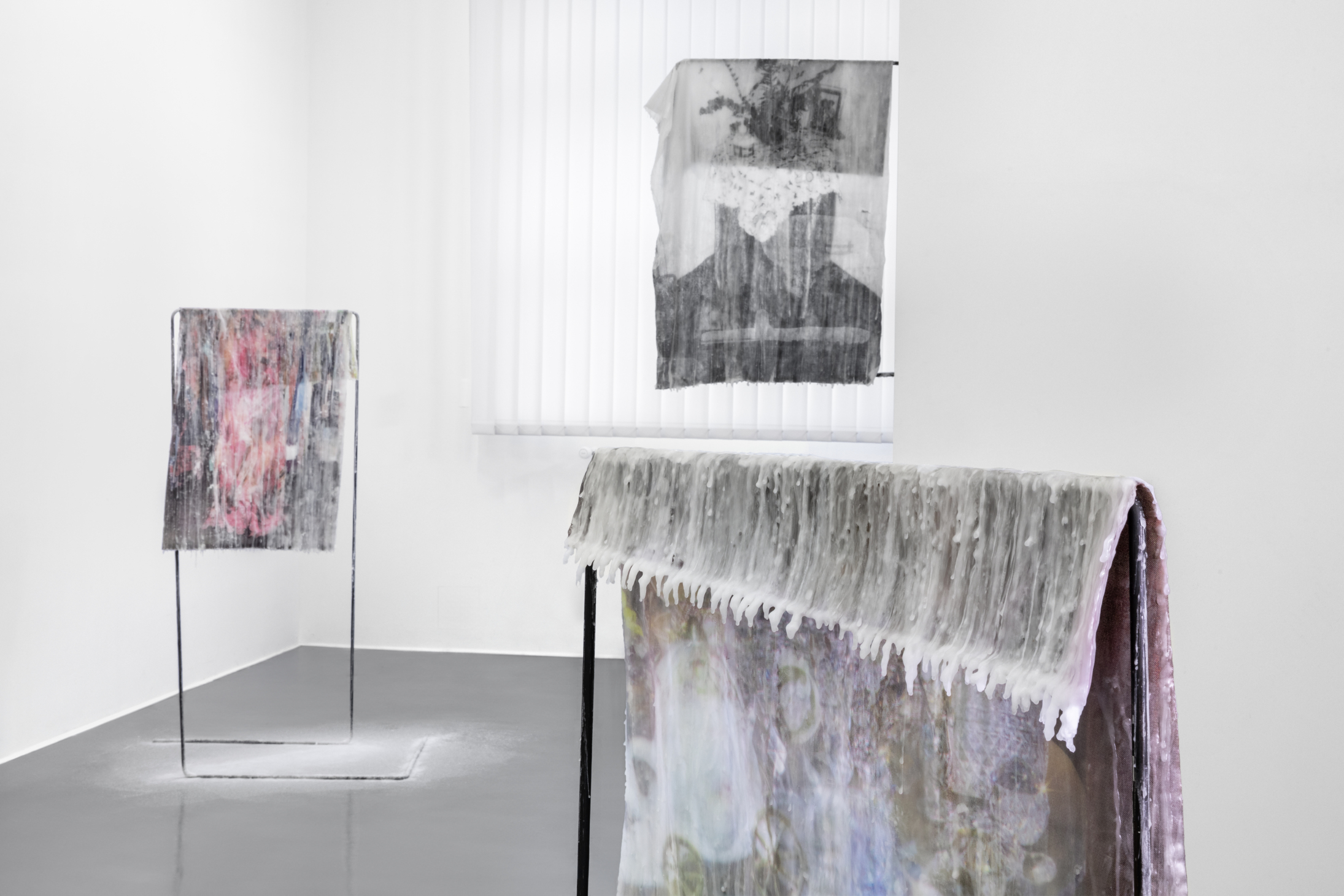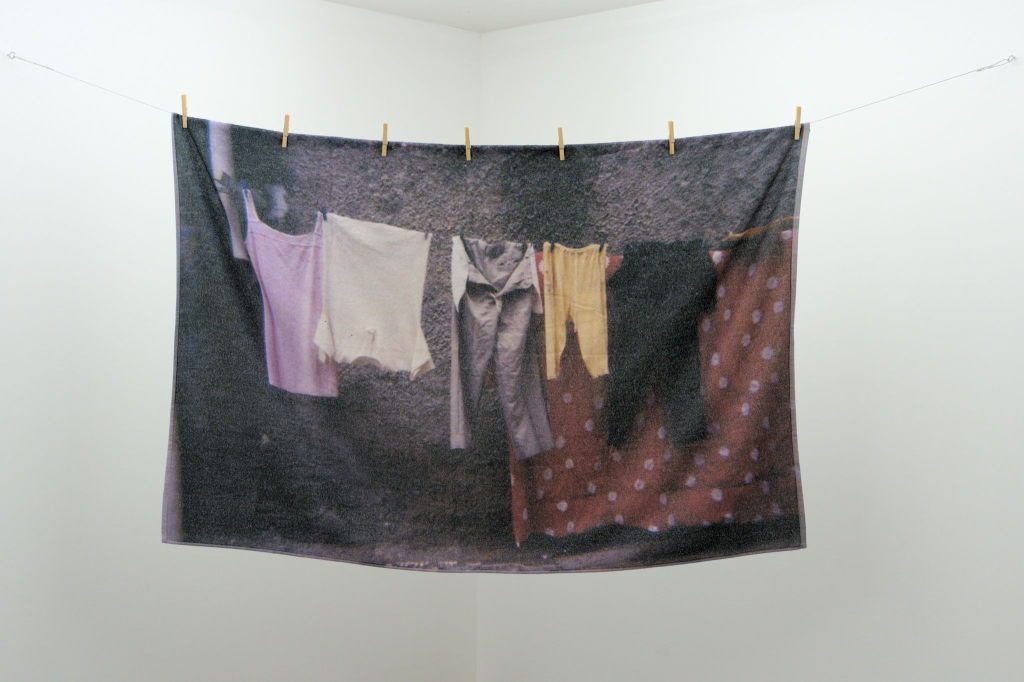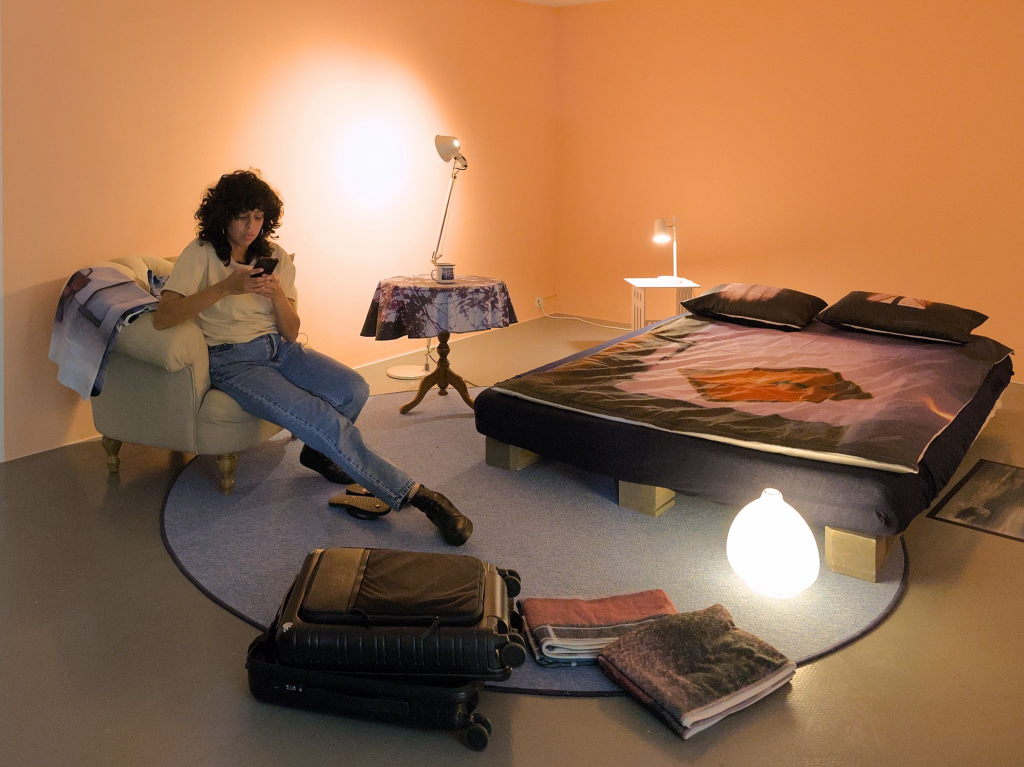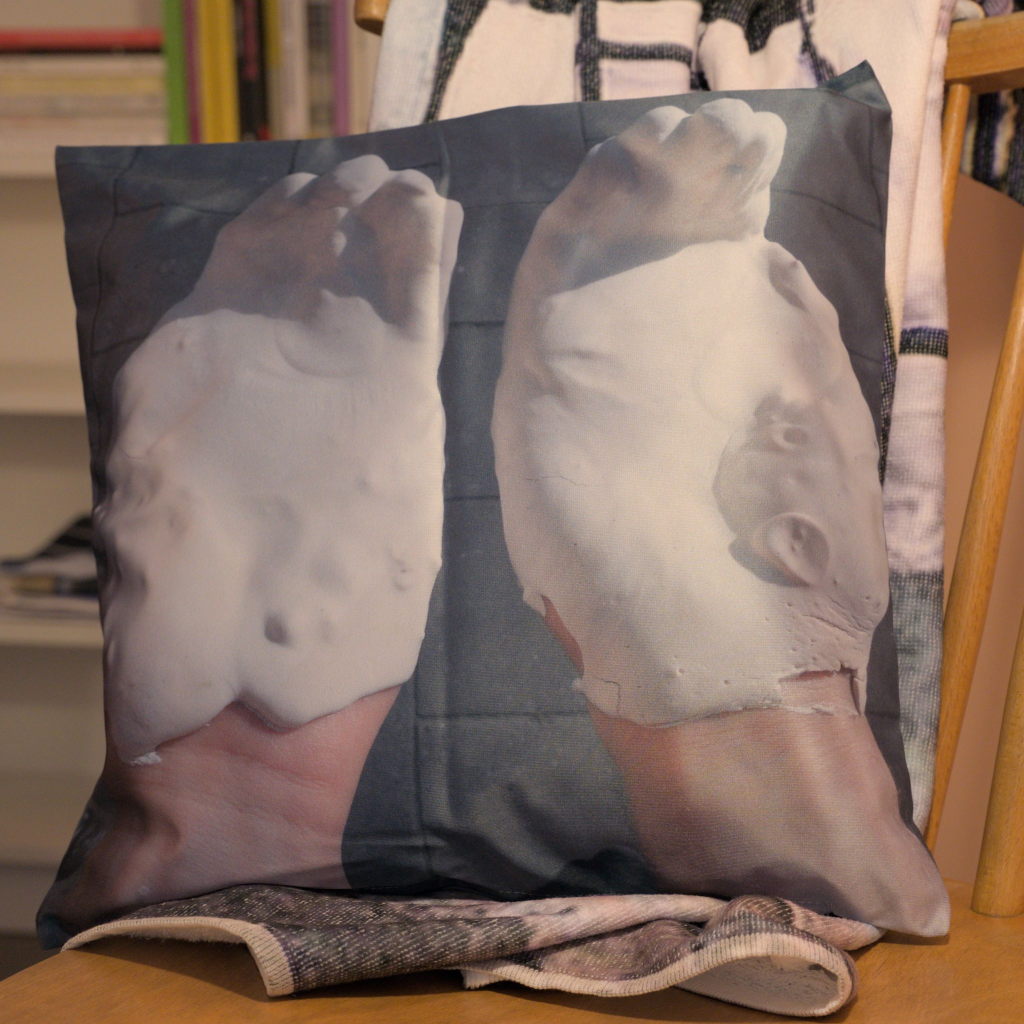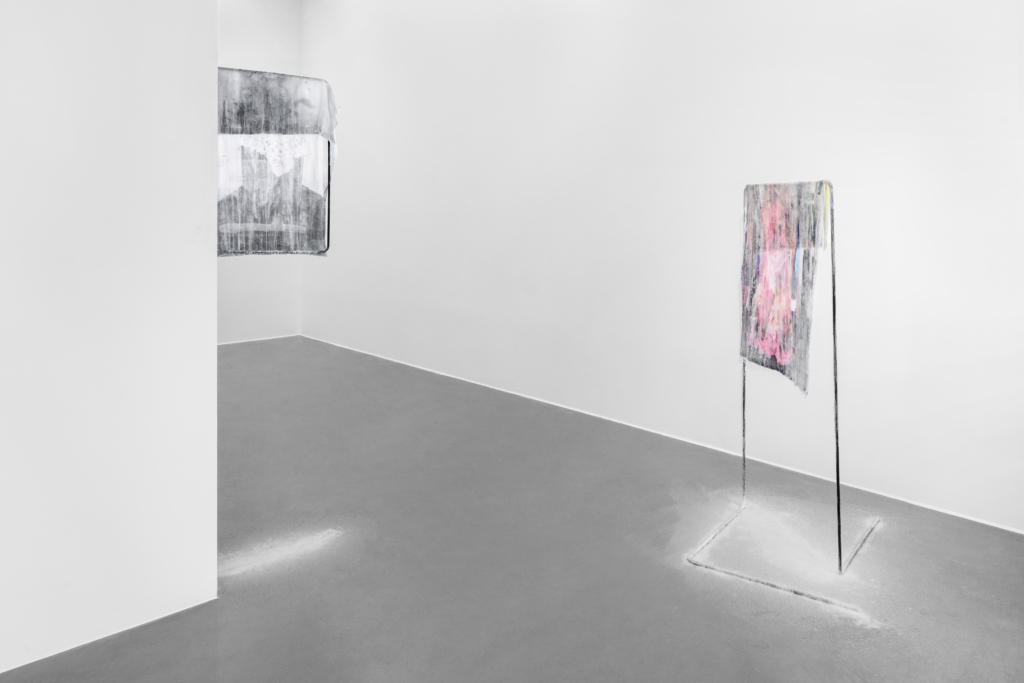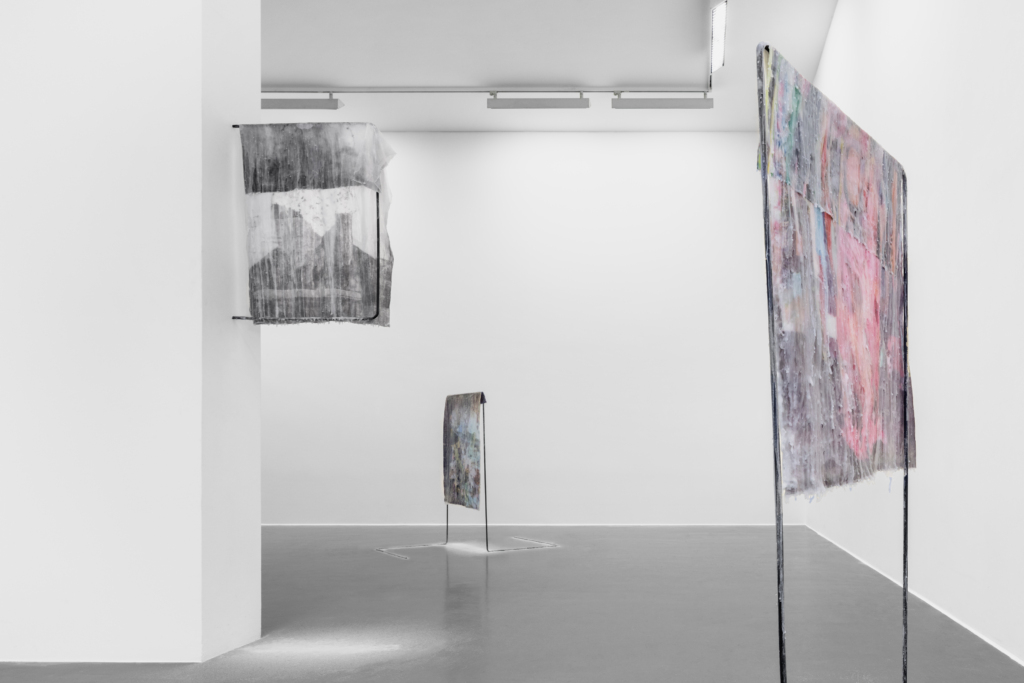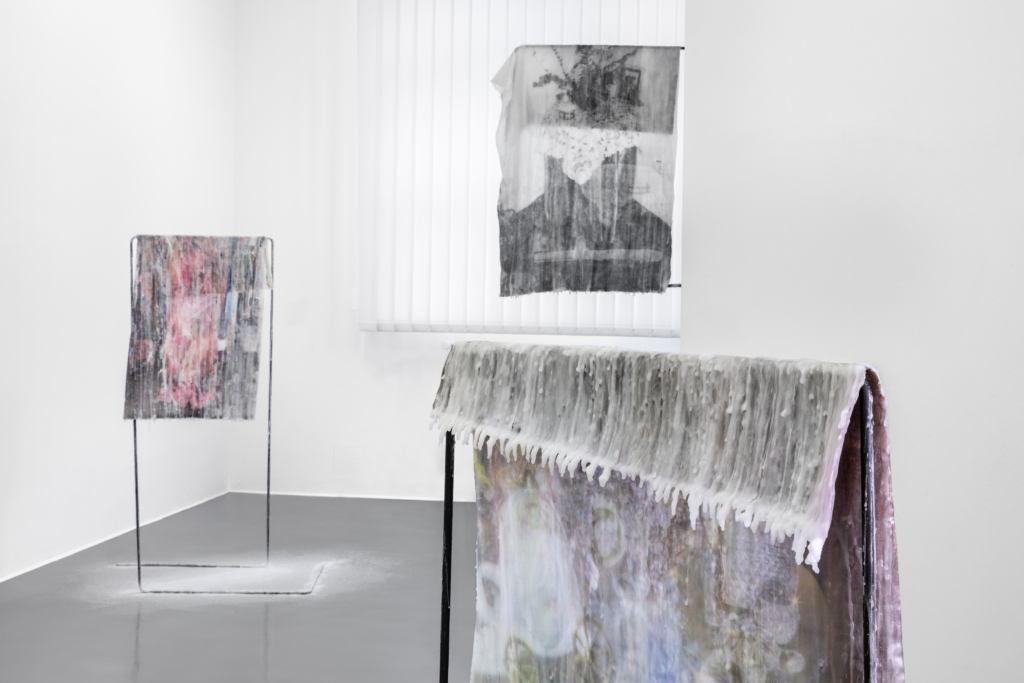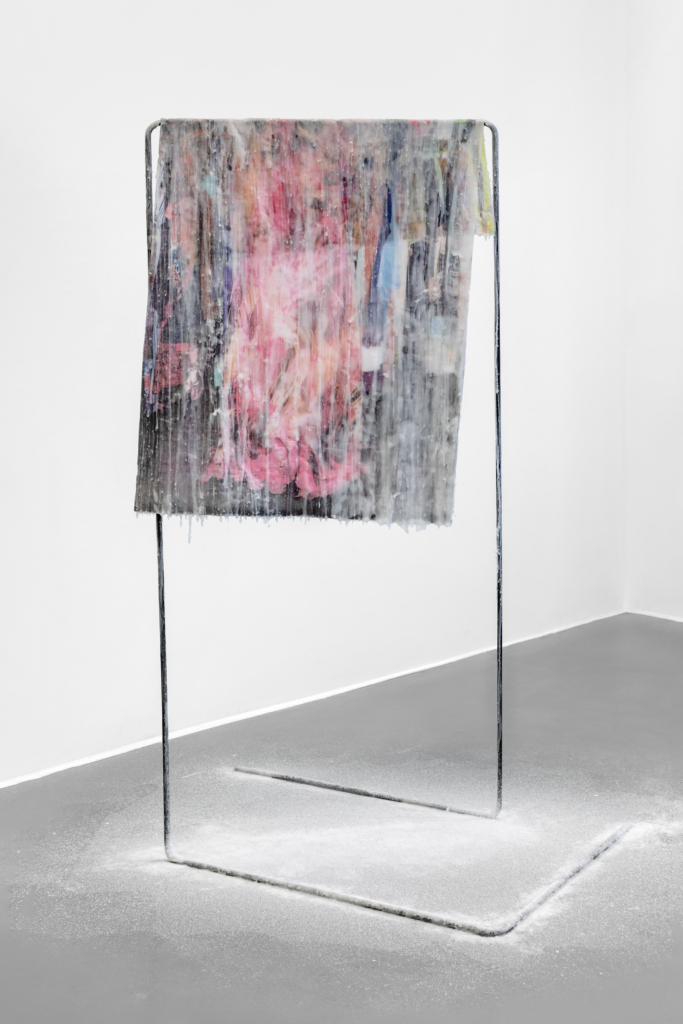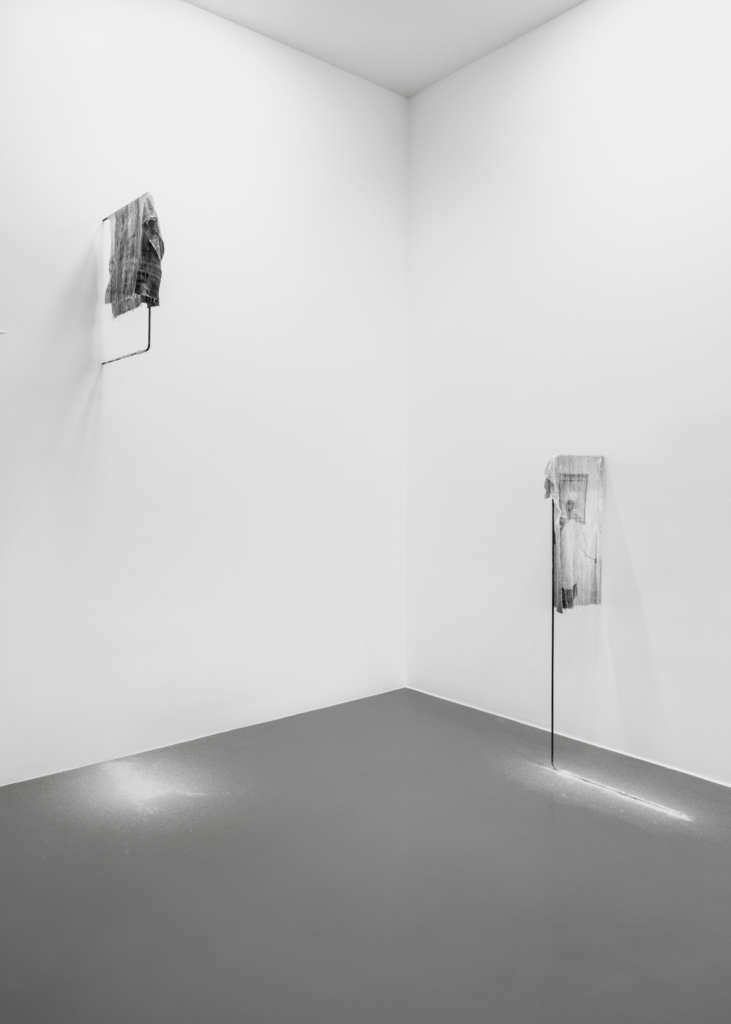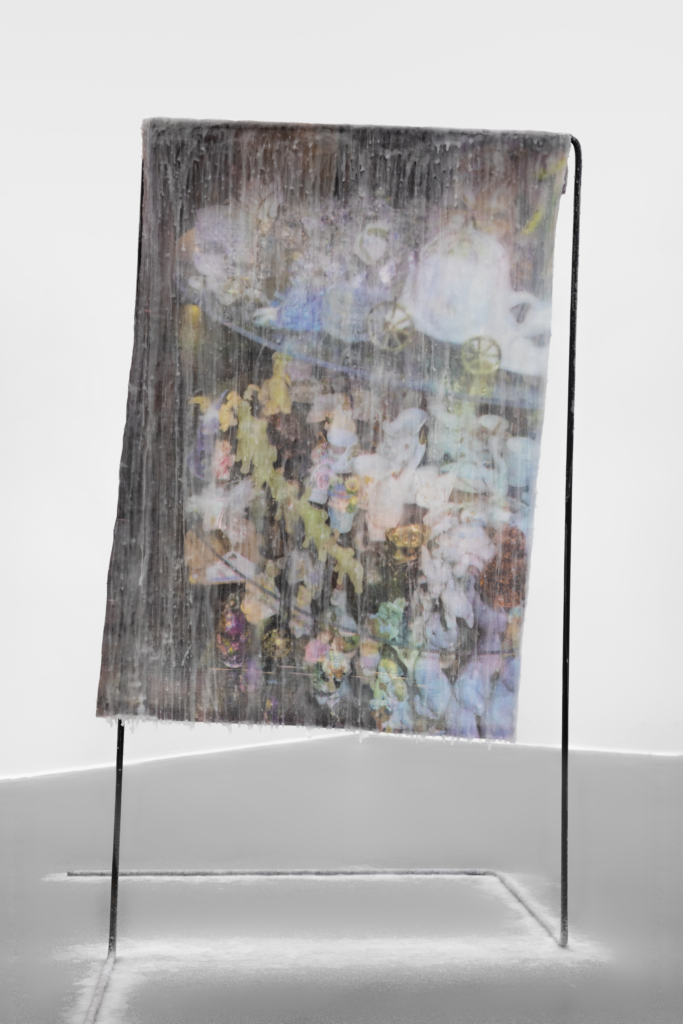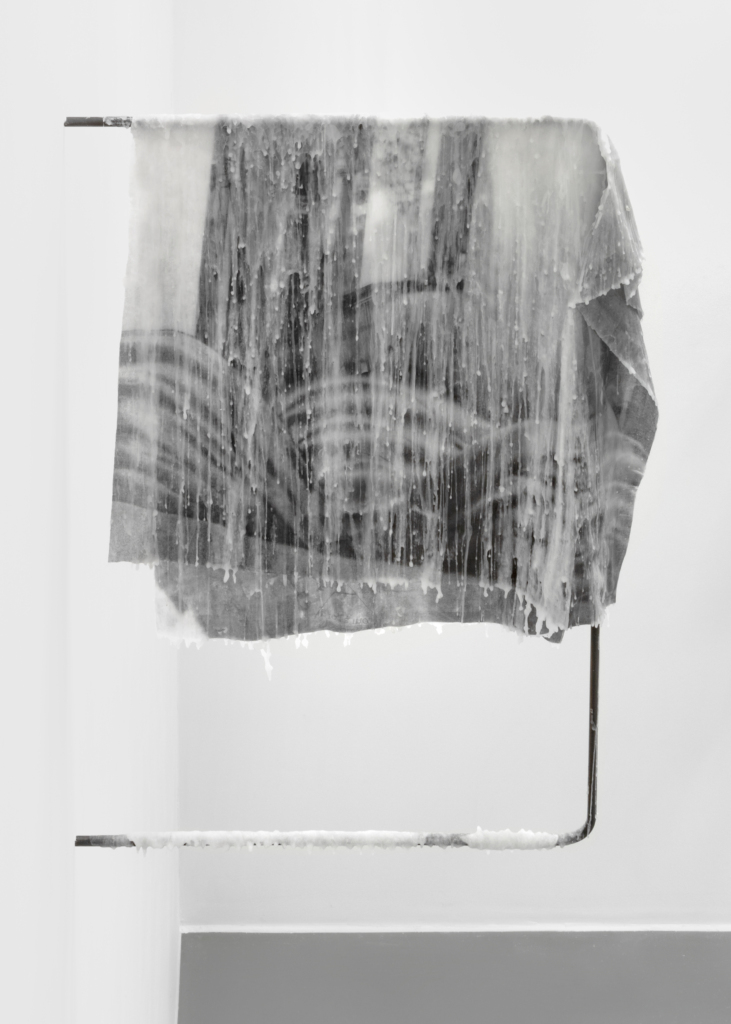Angyvir Padilla
Whispering Floors, Trembling Breaths
Whispering Floors, Trembling Breaths: when walls are speaking and exhalations shaking. In the exhibition, Angyvir Padilla works with the discordant, with objects that she wants to bring to life. Whispering Floors, Trembling Breaths at Kunstverein Friedrichshafen is the first solo exhibition of the Belgo-Venezuelan artist in Germany.
Whispering Floors, Trembling Breaths – these are whispering floors and trembling breaths. In her work, Angyvir Padilla engages with the irreconcilable – with objects and memories she seeks to breathe life into. The Belgian-Venezuelan artist explores displacement, migration, and the concept of “home” through immersive installations that often combine sculpture, performance, video, and sound. Her practice revolves around the question of what it means to have a home, to lose it, to search for it, to long for it, and to rediscover it. Using a variety of media and materials, Padilla creates spaces of memory and storytelling. Her goal is to form connections that transcend linguistic and cultural boundaries while offering viewers insight into her own story. In doing so, she transforms public space into an intimate and private realm.
Padilla “feeds” empty walls and floors – often using nothing more than simple welded metal structures. These become supports for her motifs: photographs printed on textiles and soaked in paraffin. In her work series Home Unfoldable Home(2023), Padilla presents pieces made of silkscreen prints and wax on fabric, draped over steel frame constructions. The works spread across the floor, occupying the space, interrupting movement. Mounted on walls, they seem to take over every corner of the exhibition room. Hardened puddles of wax form on the ground – concrete traces of presence. There are many ways to approach these installations. Standing close, the images – always half-obscured by the paraffin – appear almost too blurred to recognize. They depict an archive of faded photographs, taken by her mother in their shared apartment in Caracas. Only at a distance do contours become discernible. Here, it’s the trace left by the photographic medium on Padilla’s objects that comes into focus. The hardened wax pools, the stable yet uncannily fragile bodies, the indistinct photographic images – Padilla’s work always contains a fundamental paradox: the nostalgic unrepeatability of time.
With La Casa Habitada, the Kunstverein Friedrichshafen presents an in-situ installation by Padilla, partially developed in Caracas. For this site-specific piece, she creates a living space made of elements reminiscent of a room in a home – continuing her artistic trajectory. Once again, she plays with photographic memory: the images are printed onto decorative textiles and everyday objects, transforming into bedcovers or terry cloth towels. The furnishings become an unusual scenario: faded pillowcases reveal private moments from another life, allowing viewers to enter the artist’s intimate world within the exhibition space. Some of these objects blend into the space as decorative elements – adorning a nightstand or shelf. Padilla’s faded photographs become materialized memory objects, the corpus of what remains. But in contrast to Home Unfoldable Home, the memories in La Casa Habitada are now objects in actual use – activated through their domestic context.
And yet, something always remains unpacked. How many memories do we carry with us? One thing is certain: they are carried along, signs of the displaced. Always in motion, these objects nonetheless remain part of someone’s idea of “home.” Functional and refined, the objects in Padilla’s work shift from practical items to sacred keepsakes: the artist reconstructs a lived space and translates it from reality into a dreamlike landscape, woven from pasts and desires. Padilla examines how these themes manifest in our relationship to intimate spaces, personal objects, and our connection to life and memory. The longing for a lost home – whether caused by her own diaspora or the fast pace of modern life – is a recurring motif in her work.
The room becomes a space that oscillates between the (collective) cultural memory of Latin America and a more personal recollection – of love, of closeness. The objects become embodied stability, the home a refuge and a place of protection; each textile an expression of intimacy and a mirror of the inner world. Places hold memories, but they also help generate new ones – they can be inhabited and reanimated. For Padilla, materials and media are not merely tools – they are essential parts of her creative process, carefully chosen to express the transformation of memory matter in its various states. She transforms everyday and precarious objects into materialized memories, thereby activating not only the things themselves but also the spaces they occupy. Her aim is to freeze moments, to harden and preserve them.
Yet even as the past is documented through this preservation, her works contain the ephemeral, the vanishing, hinting at the immediate disappearance of these fragmentary moments. Padilla plays with the properties of her chosen materials, defamiliarizing them: where a duvet should appear soft and comforting, it becomes heavy with thought – burdened by the weight of history. Where faded childhood memories linger, other recollections demand to be acknowledged. Sometimes, they hang on metal structures like forgotten dishrags. The inescapable imprints life leaves behind take form here. Here and there, past and present, the fleeting and the solid – all intertwine. What remains is not just the object. Materialized memory stands alongside the intangible qualities of remembrance itself: it moves through hallways, spreads through the air, it trembles and quivers – a heavy breath.
Padilla’s work explores displacement, migration and the concept of “home” through immersive installations that often include sculpture, video, performance and sound. Her work deals with the question of what it means to have a “home”, to lose it, to search for it, to long for it and to rediscover it. Using a variety of media and materials to create places of memory and narrative, Padilla’s practice invites us to take a closer look at the mundane everyday surroundings we live in. Her aim is to create connections that transcend linguistic and cultural boundaries, while at the same time offering viewers an insight into her own history. In doing so, she manages to transform public space into an intimate and private setting.
With Whispering Floors, Trembling Breaths, Kunstverein Friedrichshafen is presenting two workgroups by the artist, Home Unfoldable Home and La casa habitada, which was created as an in-situ installation for the exihibtion space.
Curator: Marlene A. Schenk
